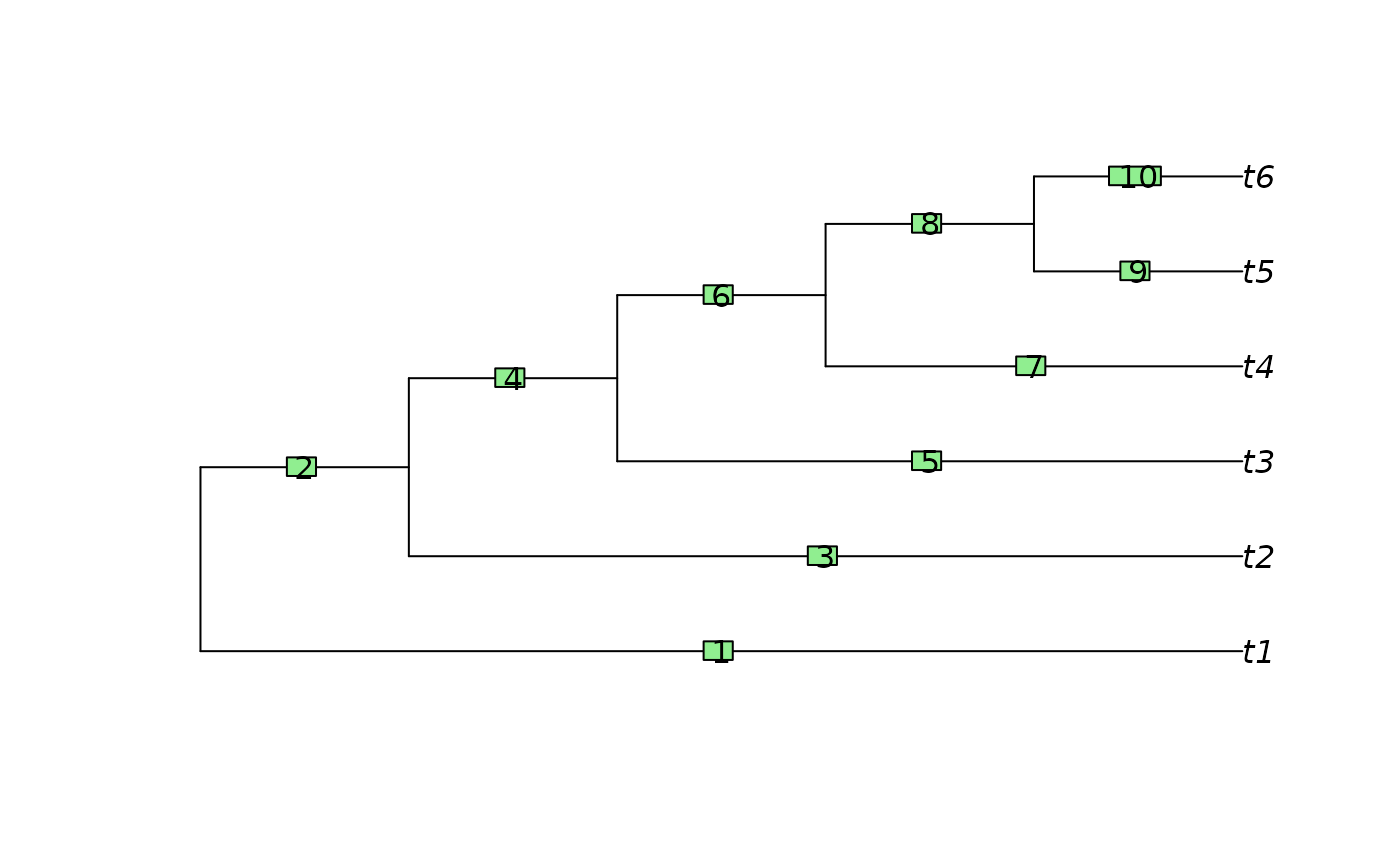Quickly identify edges that are "ancestral" to a particular edge in a tree.
Usage
EdgeAncestry(edge, parent, child, stopAt = (parent == min(parent)))Arguments
- edge
Integer specifying the number of the edge whose child edges should be returned.
- parent
Integer vector corresponding to the first column of the edge matrix of a tree of class
phylo, i.e.tree[["edge"]][, 1]- child
Integer vector corresponding to the second column of the edge matrix of a tree of class
phylo, i.e.tree[["edge"]][, 2].- stopAt
Integer or logical vector specifying the edge(s) at which to terminate the search; defaults to the edges with the smallest parent, which will be the root edges if nodes are numbered Cladewise or in Preorder.
Value
EdgeAncestry() returns a logical vector stating whether each edge
in turn is a descendant of the specified edge.
See also
Other tree navigation:
AncestorEdge(),
CladeSizes(),
DescendantEdges(),
EdgeDistances(),
ListAncestors(),
MRCA(),
MatchEdges(),
NDescendants(),
NodeDepth(),
NodeNumbers(),
NodeOrder(),
RootNode()
Examples
tree <- PectinateTree(6)
plot(tree)
ape::edgelabels()
 parent <- tree$edge[, 1]
child <- tree$edge[, 2]
EdgeAncestry(7, parent, child)
#> [1] FALSE TRUE FALSE TRUE FALSE TRUE FALSE FALSE FALSE FALSE
which(EdgeAncestry(7, parent, child, stopAt = 4))
#> [1] 4 6
parent <- tree$edge[, 1]
child <- tree$edge[, 2]
EdgeAncestry(7, parent, child)
#> [1] FALSE TRUE FALSE TRUE FALSE TRUE FALSE FALSE FALSE FALSE
which(EdgeAncestry(7, parent, child, stopAt = 4))
#> [1] 4 6